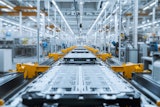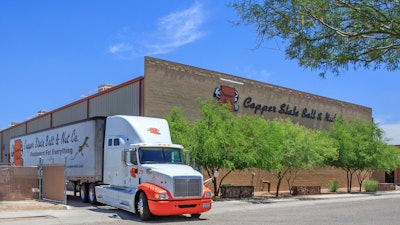
In this industry, it’s common to hear distributors stress the importance of partnerships. But it’s less likely to see a pledge to support customers that dispenses with platitudes and, instead, offers concrete examples. While many distributors make good partners, what constitutes great support, and why?
For Copper State Bolt & Nut Co., evolving to support customers wasn’t just an initiative born of the pandemic. This Phoenix-based company, which celebrates its 50th anniversary this year, has spent its half-century in business working to enhance its strategy for current and future customer relationships.
Founded in 1972, Copper State kicked off with six employees, one brick-and-mortar site and a truck. After spending its first few decades squarely focused on Arizona’s mining industry, the business began its strategic expansion, and today supports over 20,000 customers with nearly 500 employees and more than 30 facilities in nine states and a variety of end markets, including construction, industrial, renewable energy and, of course, mining.
And while half of the company’s business is still in traditional fasteners, its product portfolio has swelled over the years to include safety products, power tools and accessories, cutting tools and abrasives, kits and assortments, fluid sealing products, and other construction and industrial supplies. Not only that, Copper State is capable of manufacturing large-diameter fasteners in a variety of types, grades, specifications and materials – including custom orders – from its state-of-the-art manufacturing facility.
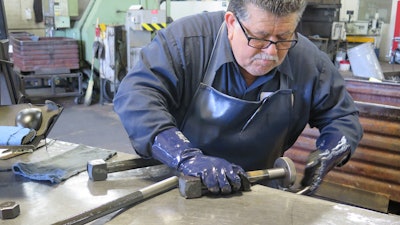 Samples are measured, inspected and tested for quality assurance.Copper State Bolt & Nut
Samples are measured, inspected and tested for quality assurance.Copper State Bolt & Nut
Instead of expanding due to a desire for a larger revenue stream, Copper State says its path was carved in response to demand. Rather than going out and looking for new opportunities, they let customers and market needs lead them. And before embarking on any new territory, the company meticulously evaluated whether it could take on the new challenge.
“The expansion outside of the state of Arizona was because our customers were asking us to support them beyond our pre-existing borders, and it was fueled by employees who wanted that growth opportunity,” Cates explains. “We’ve even had suppliers encourage us to get into (new) markets because they didn’t have a good distributor in that market. So that’s why we’re now serving nine states with more than 30 locations.”
Hyper-Focused Discipline
Although the ends have certainly justified the means, Cates stresses the deliberate thinking behind each decision. Part of this strategy derives from Copper State’s “hyper focus” on decision-making that made sense in both the near- and long-term. For example, when the pandemic hit, the company took a look at the role of its storefronts.
“A small portion of our revenue but a significant portion of our transactions are customers coming to our stores to pick up a product,” says company CEO Sarah Shannon. When the pandemic first hit, Copper State maneuvered strategically around a workforce that needed flexibility, including staggering shifts wherever possible so employees with kids at home could work when they were available. This also meant “putting a lot of restrictions on our retail business,” she says.
Adds Cates, “These decisions, because they were made through the lens of integrity, were the right thing to do.”
It was this same guideline that helped cultivate the challenging position Copper State took regarding its inventory. When supply chain pressures began to creep in, it was an easy decision for company leaders to invest in inventory, and they increased their carrying capacity by a full 30%.
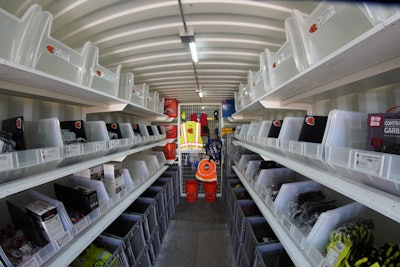 A peek inside Copper State’s jobsite VMI: You pick out the items you need, Copper State fills a Conex container, and delivers and manages the inventory for you.Copper State Bolt & Nut
A peek inside Copper State’s jobsite VMI: You pick out the items you need, Copper State fills a Conex container, and delivers and manages the inventory for you.Copper State Bolt & Nut
But after the investment came the true discipline: Copper State took a hard line on what this inventory was for and made certain its team members understood that the company’s legacy customers would come first when it came to critical products. If buyers emerged that weren’t active customers and the supply was low or allocated for existing customers, “we would not quote on that,” says Cates. “We voluntarily gave up that order. And the reason we had to do that is we needed to preserve that inventory for our existing customers.”
Success Through Enablement
Some companies would have found it difficult to encourage a sales-based organization to not sell its products to certain interested buyers. But Copper State team members have been nurtured to approach the market in an intelligent manner: they respect existing customers and know how to make the right choice on a transactional basis.
From the company’s perspective, a workforce that’s equipped with the ability to act quickly and make decisions will solve customer problems efficiently and effectively, which is why Shannon says the company stresses the enablement of its team members.
According to Shannon, this starts at the top.
“We’re constantly fighting to keep the organizational structure flat and not create a lot of red tape,” she explains. “We operate in an environment with a lot of trust so that we can be quick to respond to customers’ needs.”
One of the ways this takes shape is through Copper State’s policy of allowing employees unfettered access to posting information on the company’s SharePoint site.
“Whether it’s from an HR standpoint, a marketing standpoint, price updates, supply chain issues, they don’t have to get approval to post,” says Cates. “You can’t possibly write everything down in an employee handbook. People shouldn’t have to follow a flow chart on how to behave.”
Instead, Copper State follows a basic mantra that serves as an underlying expectation when extending trust to its workforce: “When in doubt, act with integrity.”
Copper State acknowledges that the market for talent is tough right now, even for a company that strives to serve as the first choice for suppliers, customers and employees alike.
 Advanced technology meets innovation with Copper State’s Load Monitoring Fastener Plus (LMF+), a wireless, accurate, and automatic load monitoring fastener system.Copper State Bolt & Nut
Advanced technology meets innovation with Copper State’s Load Monitoring Fastener Plus (LMF+), a wireless, accurate, and automatic load monitoring fastener system.Copper State Bolt & Nut
Secondly, Copper State continues to look to underrepresented groups to mine talent, including people who might simply need a second chance. The company has partnered with several organizations that represent disadvantaged workers that help give them tools, from bus passes and boots to interviewing tips.
“We find that folks out there that are just looking for a second chance, regardless of what went on in their past, tend to do really well in our environment,” says Shannon.
Adds Cates, “We’ve been willing to look at folks that have a background that is, in some cases, discarded by competitive employers and to the extent that those folks are interested in coming in here and working hard – let’s give them that chance. It’s very true there are a lot of employees that are street smart, that wouldn’t necessarily have had college as part of their path.”
From Yesterday to Tomorrow
Taking an approach that differs from the status quo makes Copper State stand out in the market, but the company also strives to continually modernize and revise its approach to evolve from its own origins.
As Copper State founder – and Shannon’s father – Martin Calfee is fond of saying, “If we do business today like we did yesterday, we won’t be around tomorrow.” And as a business initiative, it’s one that’s as true as it is challenging to implement. Targeted growth for Copper State requires justification, and Shannon says that before embarking on new opportunities, she asks the team, “What are you willing to compromise if we’re going to make this next step?” The answer she always gets is, “Nothing.”
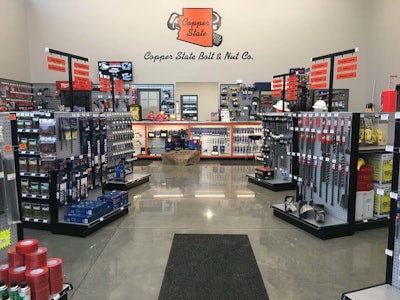 One of Copper State’s will call showroom stores, located in Spokane, WA.Copper State Bolt & Nut
One of Copper State’s will call showroom stores, located in Spokane, WA.Copper State Bolt & Nut
Truly, the best successes come from encouraging the workforce to focus less on moving up, and more on moving through the organization.
“That’s the really special thing about our company,” says Shannon, “is that we really have allowed the whole entire team to move through the business and learn our strategies, our culture and just how we go to market.
“It’s so fun to think that, most likely, the next person that’s going to have my job is already working here.”
